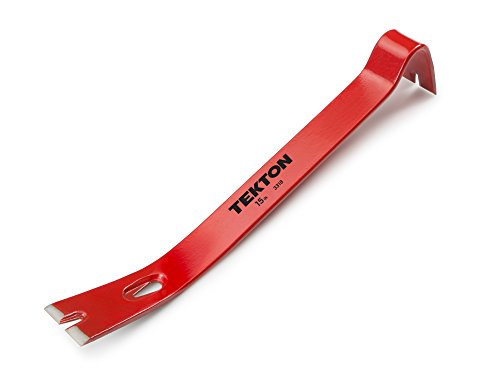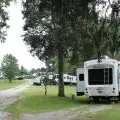Hey! This site is reader-supported and we earn commissions if you purchase products from retailers after clicking on a link from our site.
What if you have some sort of damage to one of your RV’s walls due to weather issues such as water, hail, or snow; are you prepared to tackle the repair of that damage by yourself? Would you like to remodel or upgrade your interior design by replacing an interior or relocating an inner wall and you’re not sure how to do that task?
If you answered yes to those questions, be sure to read on. In this article, I’ll guide you through how to repair damaged walls and how to redesign or remodel an existing wall if you’ve recently purchased a used RV and you want to upgrade its design. We’ll also look at what tools, hardware, and materials you’ll likely need to do the upgrades and the needed repairs.
First, find out where the leak is
The most important aspect when addressing water damage in your RV is to find out where your leak is and what’s the best solution for making the necessary repairs. Quite often, the source of the leak may be in a place several feet away from the damaged area in the wall, so you’ll need to thoroughly inspect your RV prior to making your repairs.
While the general rule for free-flowing water is to take the path of least resistance, if a seam on your roof only allows a minuscule amount of moisture into its opening, then it’s likely that path could change between times of leakage and the path could also change based upon how level your RV is parked or whether you’re diving in the rain.
As a rule, you’ll find that most water damage in a wall is the result of a leak in your roof. This is likely to cause water stains on your ceiling and staining high on your wall or at its base. However, it’s also possible to have leakage through your flooring and the water staining will be concentrated at the base of your walls. With that said, I would recommend that you first inspect your flooring by getting under your RV and search for any deterioration nearest to where you suspect that water is getting into your rig.
If you discover that there that there are no leaks in your flooring, the next step is to inspect your roof. For this task, you’ll need to properly access your roof and I recommend that you avoid using a manufacturer installed ladder at the rear of your rig. Why? Because there could he structural damage to the roof that won’t hold your weight.
Instead, a better option would be to use an adjustable and foldable ladder that can be easily stowed away with any other essential tools you’ll likely need when traveling. Whether you’re a full-time RVer or a part-timer, I recommend that you always carry a ladder to access the roof area of your RV when needed.
- Dimensions - Max A-frame height: 5'1'' | Max Extension Height: 11' | Max scaffolding height: 3' |...
- The Velocity also includes several innovative new features such as the dual-pin hinge and the...
- The Velocity can be used in many unique configurations as an a-frame, extension, staircase and...
Last update on 2025-07-17 / Affiliate links / Images from Amazon Product Advertising API
Inspecting your RV roof can be tricky. Depending upon the manufacturers and their various design guidelines, there may will be a wall and sealing seams which is usually covered up with a J-rail. This, and cross seams that seal the interior areas of your roof are likely to cause issues with your RV’s roof. The trick is identifying those breeches and properly repairing them. In a future article, I’ll share my tips on the best ways to seal your roof to prevent any water leaks.
Once you have located the source of the leak and have properly sealed it, now you’ll need to tear into your wall to make the necessary repairs. To begin, locate the nearest wall panel seam to your damaged area. If there are floor or ceiling moldings, you’ll need to remove these before you begin to remove any paneling. You’ll also need to remove any electrical outlet and switch covers too.
Removing your wall panels
As I have said in numerous other articles, RV manufacturers typically don’t use the most expensive materials when building RVs. And they’re also built with time efficiency in mind. Don’t be surprised if you find that your wall panels have been attached to the studwork with building staples. If this is the case, you should have a pair of pliers, a hammer, and a flat-head screwdriver on hand because you’ll need to pry the screwdriver under the staple by lightly tapping on the screwdriver handle (a small wood chisel works well for this too) then pull up on the chisel or screwdriver and this should one or both sides of the staple free of the studwork. If only one side of the staple is freed, then use your pliers to completely remove the staple. Repeat this process for each stud until the panel can be removed. If your damage is located in the front upper panel (and sometimes a rear panel) it’s likely that you’ll encounter a radius so try to save this part of the old panel to use as a template when cutting your new replacement panel. In fact, do your best to preserve the old panel so you’ll know where any openings for windows, or outlets are located as well.
If your panel has been attached using finishing nails, it’s likely that as you pry the panel away from the studwork, that the panel will pull away but not the nail since finishing nails don’t have a large head on them like most other nails have. If this is the case, after you have removed the panel, you’ll need to use the claw side of your hammer to pull the nails free.
Another option for removing nails is to use a wrecking pry bar. These are inexpensive and a great option when removing small nails.
- Versatile, all-purpose contoured bar with broad flat end and high-leverage rocker end
- Thin, sharpened chisel tips slide easily into the tightest cracks and crevices
- Three nail slots (one at each end, one in the middle) lets you get at nails from any angle
Last update on 2025-07-17 / Affiliate links / Images from Amazon Product Advertising API
Before you begin to replace your damaged panels, be sure to inspect any insulation in your wall for damage too. When you’re replacing an entire panel, it’s likely that not all the panel will have water damage nor will the insulation or any other components such as wiring. However, I’m a firm believer that once you have taken something apart, you should inspect anything you can and make the appropriate changes or upgrades when you can.
For example, this is a great time to modernize your rig if it’s an older model. Frankly, if I were doing a restoration of any RV, I would make sure to close the repair only after I have replaced any fiberglass batting used for insulation. Instead I would replace that batting with foam panels which is much easier to work with and less likely to have a mold buildup if it’s exposed to a little moisture.
This is a good time to inspect any electrical outlets or switches for loose wiring or shorts as well. This also will give you an opportunity to install additional outlets for 12-volt wiring such as USB charging lines for cellphones or laptop computers as well as any other wiring you may want to update.
Replacing your panels
There are literally hundreds of options when choosing to replace your RV panels. For me, I find the looks of wood grain very appealing and while I prefer a more natural look than this red oak stained panel shown here and available from Amazon, this 4’x8’ panel does come unfinished making it a good option for someone like me that would prefer to stain it a lighter shade. Here is an oak furniture guide you might find helpful.
- REAL WOOD VENEER SHEET – Unfinished and ready for stain and/or finish. Veneer provides stability...
- PREMIUM QUALITY – Gives you confidence that the wood will be right for your project
- EASY TO USE – These veneer sheets are easy to cut to the size you need and are easy to finish +...
Last update on 2025-07-17 / Affiliate links / Images from Amazon Product Advertising API
While some folks may decide to cut corners and apply a panel like this directly onto the studwork, I would recommend first attaching an underlayment of 1/8” plywood. Adding an additional layer of wood panel will in turn add strength, more soundproofing, and most importantly, another barrier for natural elements such as heat in the summer and cold in the winter.
As I said before, the options are practically endless when deciding on your wall’s design. For example, some people prefer a wood panel they can paint or apply wallpaper to. Other people prefer to apply a wood panel then add peel-and-stick panels over that, while some people prefer to use tongue and groove panels. Do your research and find what works best for you.
One tool I would recommend when replacing paneling on you RV is an electric or an air nail gun. These save a lot of time and since finish nails are small and hard to hold by hand, they are far more efficient when nailing your panels in place. Additionally, you are less likely to damage your paneling using a nail gun as opposed to a hammer.
- 🔰CONVENIENCE --The electric nail gun/staple gun doesn't need compressors or hoses, which makes...
- 🔰WIDE APPLICATION -- The nailer/stapler is ideal for Softwood DIY projects such as carpentry,...
- 🔰Safety Design -- The 18 gauge brad nailer is designed with On/Off power switch, safety contact...
Last update on 2025-07-17 / Affiliate links / Images from Amazon Product Advertising API
Final thoughts
As with any DIY project when working on your RV, the more you do them, the better your work is over time. Be patient as you work and if you don’t understand something, do some additional research or seek out the advice of others that are more knowledgeable than you. Remember, most do-it-yourself RVers are a friendly bunch and usually glad to pass along any advice to those with less experience. If you’re doing some wall paneling in a van, make sure to read Lindsey’s article on van wall paneling during her van conversion process.
I have spent years learning how to restore, remodel, and maintenance RVs. That knowledge didn’t come to me overnight and while the internet is a valuable source for newbie RVers, not everything you may need to know is as easy as a click or two away on your laptop.
Thanks again for following along my friends. Stay safe, stay healthy, and I hope to see you out on the road someday.






